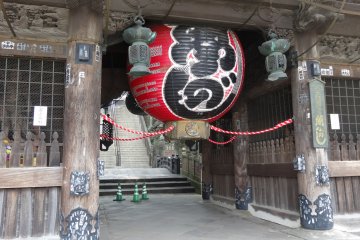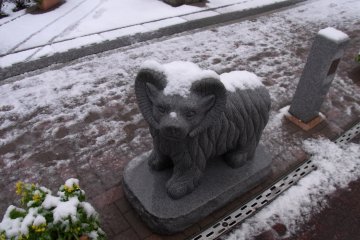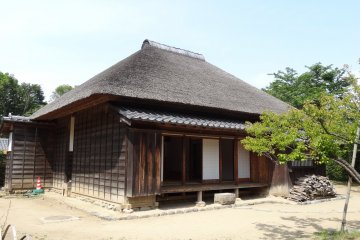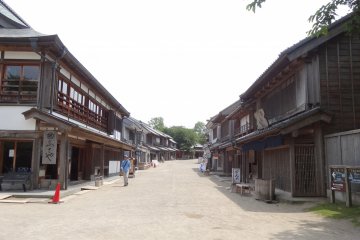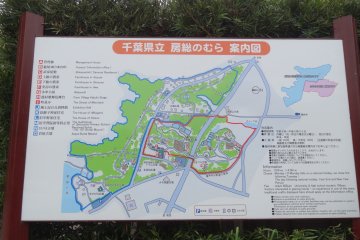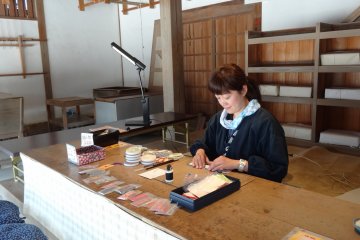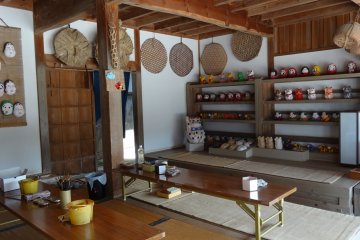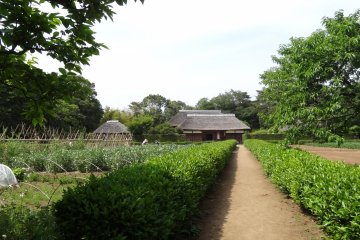Walking through the entrance of Boso no Mura Open Air Museum, past the office and ticket booth, just around the corner, the view in front of me made me feel like I had gone back in time a hundred years ago. Even though the village is a reproduction, it has a highly realistic look and feel.
A set of commercial district buildings with several shops line a dirt street. There are restaurants, noodle shops, a paper shop, a carpenter shop and more. Each one is fully furnished and has a small museum on the top floor exhibiting things about the shop below. The dress shop’s top floor has a showcase of traditional hair pins and how they were made. The fabric store has an exhibition and history of Japanese indigo dyeing, etc.
There are all kinds of activities for visitors to enjoy and get hands-on experience. The day I visited, the paper shop held a how-to origami workshop, making a Japanese doll. The tea shop had a tea grinding demonstration and you get to try it yourself. The traditional Japanese tea millstone looks kind of like a traditional flour millstone in Thailand but smaller. They also have paper mache doll making class in another building. Each day the activities may vary.
In addition to the commercial district, there are Samurai residences, middle class housing and farmhouses. Each house throughout the area is open to visitors, outside and inside. It feels like strolling through a relatives or a close friends home, because every house is decorated like there are people living there.
Inside the large grounds of Boso no Mura, there are all kinds of lush vegetation. Each month there will be different flowers to enjoy. I saw a lot of sakura or Japanese cherry trees. In April Boso no Mura would fill with the white and pink of sakura blossoms. Before the sakura blossoms would be plum blossoms on the many plum trees. When I was there (the end of May) the plum trees were full of little green plums. I saw Japanese persimmon blossoms for the first time here. Many persimmon trees on the grounds were filled with lovely yellow blossoms which will turn into beautiful orange persimmons in a few months. The paths around Boso no Mura are lined with Ajisai or hydrangeas which will bloom in June. Those who like to see the purple-blue of hydrangeas should not miss this event.
The Boso no Mura open air museum is open to visitors from 9am to 4:30pm hours every day except Monday. Admission: Adult 300 yen, 150 yen for High School and University Students. Free of charge for children (Jr. high and younger) and seniors.
From the west exit of JR Narita station take a bus towards Ryuukakuji-dai Shako-mae. It will take about 20 mins, and get off at Ryuukakuji-dai Ni-choume stop. The bus cost 400 yen. Boso no Mura’s entrance is about 5 mins. walk from the stop.
Come and stroll back into time, immerse yourself in the culture of Japan with hands-on experience and enjoy nature, trees and species of plants at Boso no Mura open air museum. Have a good time!



